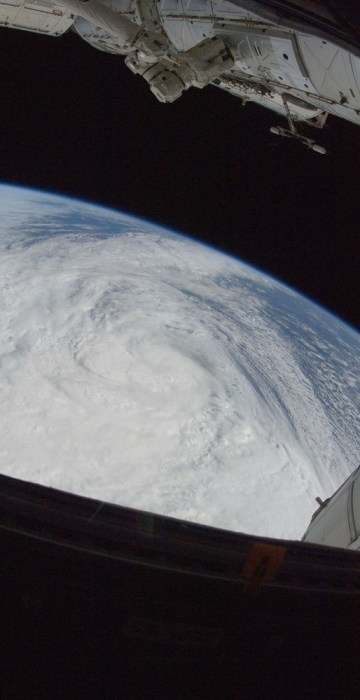
Science News
Month in Space: October 2012

Sandy seen from space
One of the Expedition 33 crew members aboard the International Space Station took this photo of Hurricane Sandy on Oct. 29. At the time of the photo, Sandy was 25 miles southeast of Atlantic City, N.J., moving north-northwest at 18 miles per hour and packing winds of 90 miles per hour.
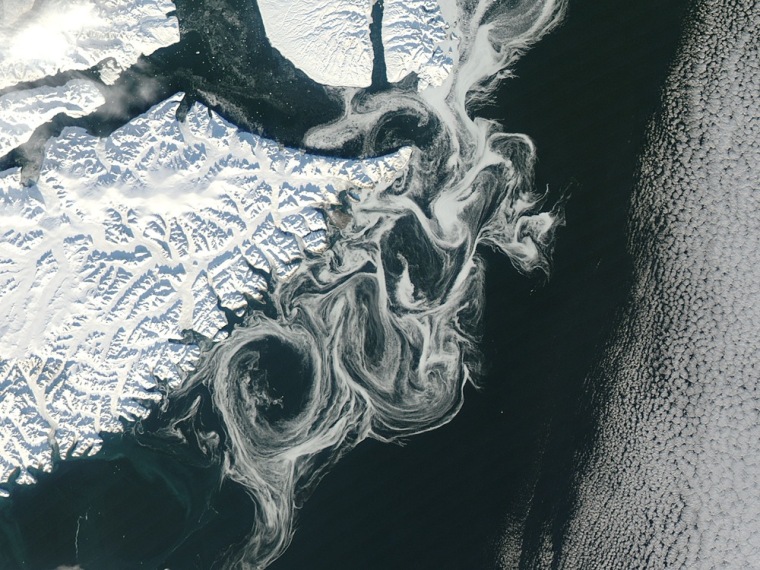
Sea ice
Sea water off the east coast of Greenland looked a bit like marbled paper in October 2012. The shifting swirls of white were sea ice, as observed by the Moderate Resolution Imaging Spectroradiometer (MODIS) on NASA's Aqua satellite on Oct. 17, 2012. In fact, this ice moved discernibly between Oct. 16 and Oct. 17. Thin, free-drifting ice moves very easily with winds and currents. Each year, Arctic sea ice grows through the winter, reaching its maximum extent around March. It then melts through the summer, reaching its minimum in September. By October, Arctic waters start freezing again. However, the ice in the image above is more likely a remnant of old ice that migrated down to the coast of Greenland. Sea water is unlikely to start freezing this far south in October.
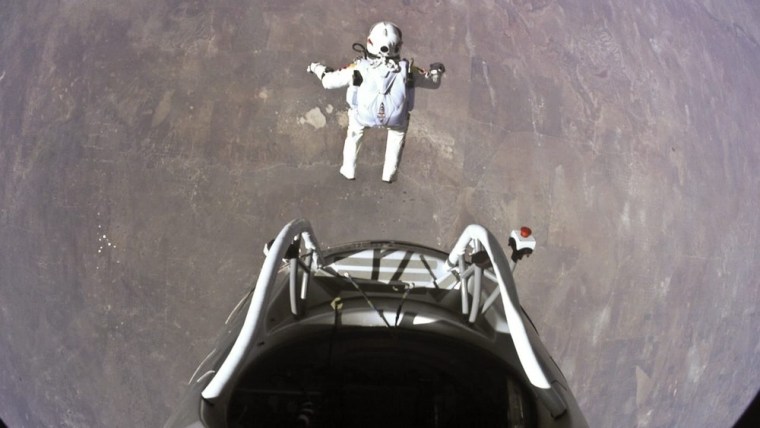
A jump for the record books
Austrian stunt daredevil Felix Baumgartner jumps out of the capsule during the final manned flight for Red Bull Stratos on Oct. 14, 2012. Baumgartner became the first human to travel faster than the speed of sound outside an aircraft, in a spectacular leap from a capsule lifted by a helium balloon to 39 kilometers above the surface of the earth. Baumgartner descended the last several kilometers by parachute and landed safely in an unpopulated area of New Mexico to cheers from his support team in a nearby facility that looked a lot like a NASA mission control center.
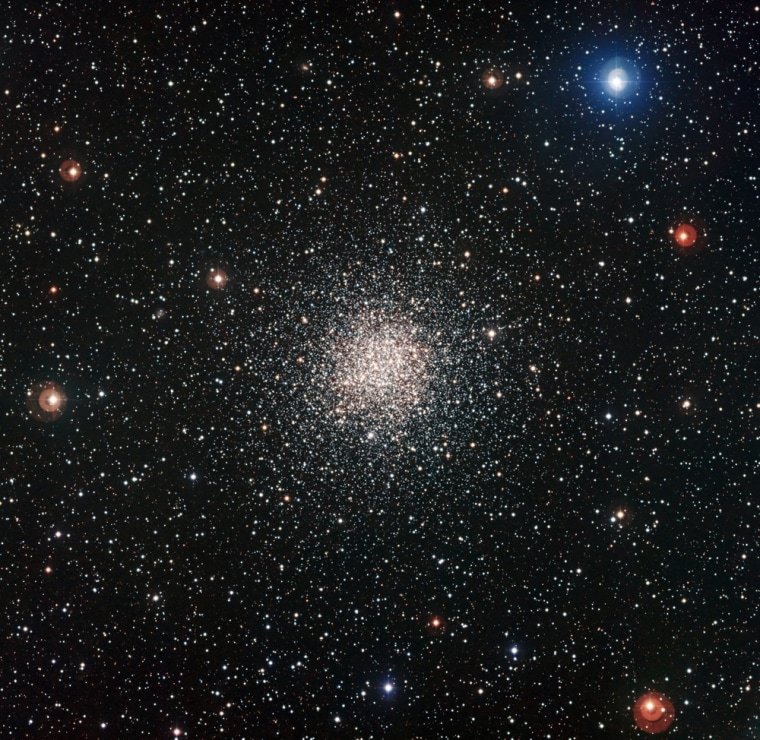
Stunning star cluster
A new image of globular cluster NGC 6362 captured by the Wide Field Imager, installed at telescopy MPG/ESO from observatory La Silla, in Chile. Globular clusters are composed mainly of tens of thousands of very old stars, but also contain some stars that look deceptively young.
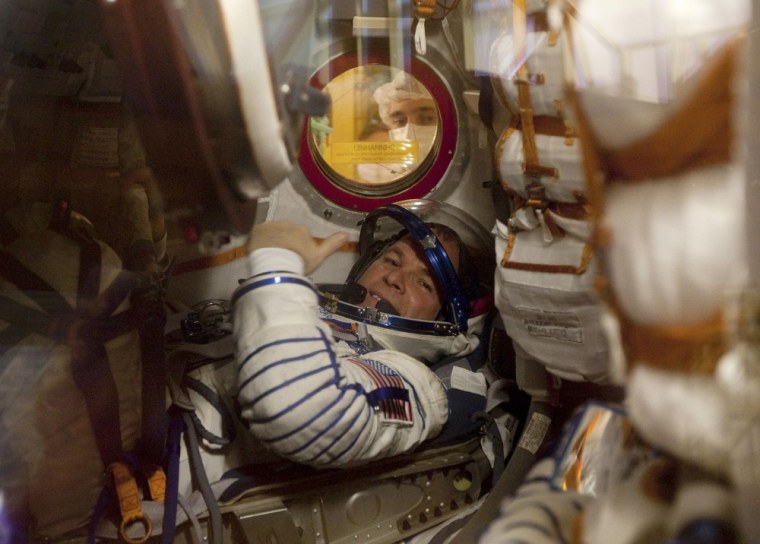
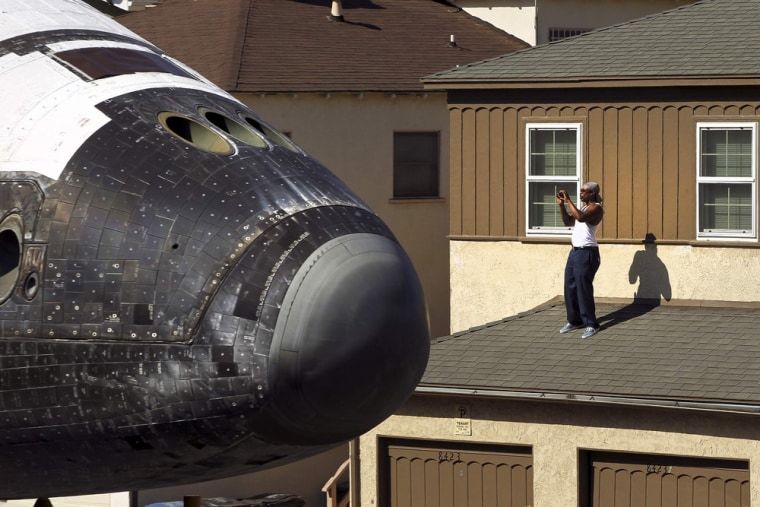
Nosy shuttle
A man takes a photo as space shuttle Endeavour passes by in Inglewood, Calif., on Oct. 13, 2012. on its way the California Science Center in Los Angeles. Transporting Endeavour cross-town was a costly feat with an estimated price tag of $10 million, to be paid for by the science center and private donations
Read: Space shuttle Endeavour rolls into new L.A. home at museum

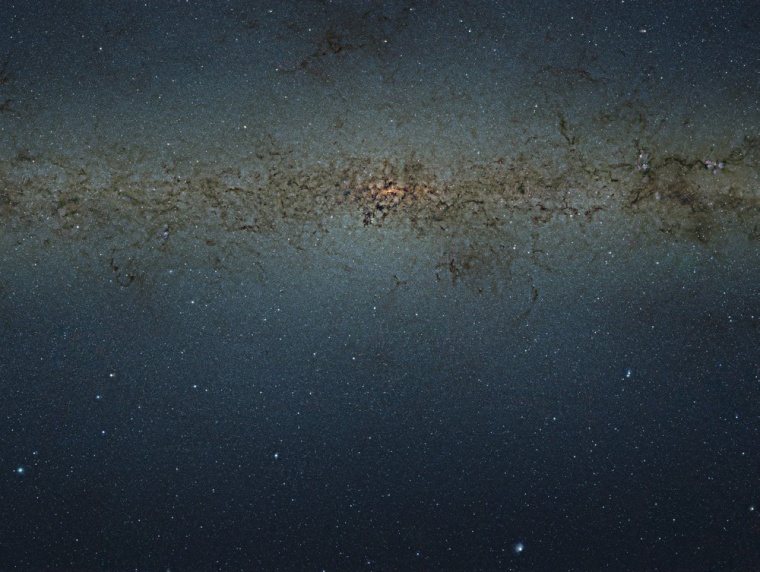
84 million stars in one photo
This view of the central parts of the Milky Way was obtained with the VISTA survey telescope at ESO’s Paranal Observatory in Chile. The huge picture contains nearly 9 billion pixels and was created by combining thousands of individual infrared images from VISTA into a single monumental mosaic. The image is too large to be easily displayed at full resolution. Astronomers have cataloged 84 million stars at the heart of the Milky Way galaxy using the photo, a view that is billed as the largest survey ever of the stars in our galaxy's core.
Read: One stunning photo captures 84 million stars in our galaxy
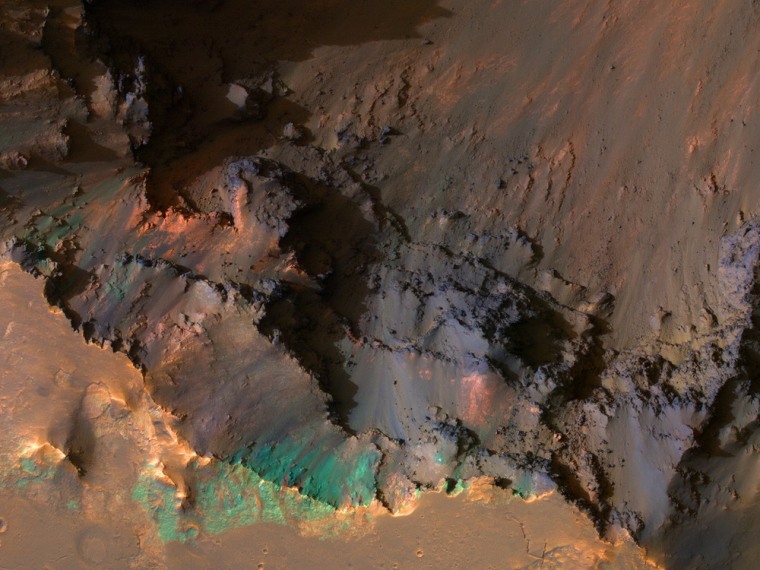
Martian colors
This image covers a small portion of gigantic Coprates Chasma, part of Valles Marineris on the Martian surface. With enhanced IR colors, we see a portion of the very top of the south wall of the canyon, looking down onto the steep upper slopes. The colors indicate that diverse rock types are present.

A priests's blessing
Expedition 33/34 crew members, NASA astronaut Kevin Ford, Soyuz Commander Oleg Novitskiy, and Flight Engineer Evgeny Tarelkin of ROSCOSMOS receive the traditional blessing from a Russian Orthodox priest at the Cosmonaut Hotel on the morning of their Soyuz launch to the International Space Station on Oct. 23, in Baikonur, Kazakhstan. Launch of a Soyuz rocket later in the afternoon will send Ford, Novitskiy and Tarelkin on a five-month mission aboard the International Space Station.
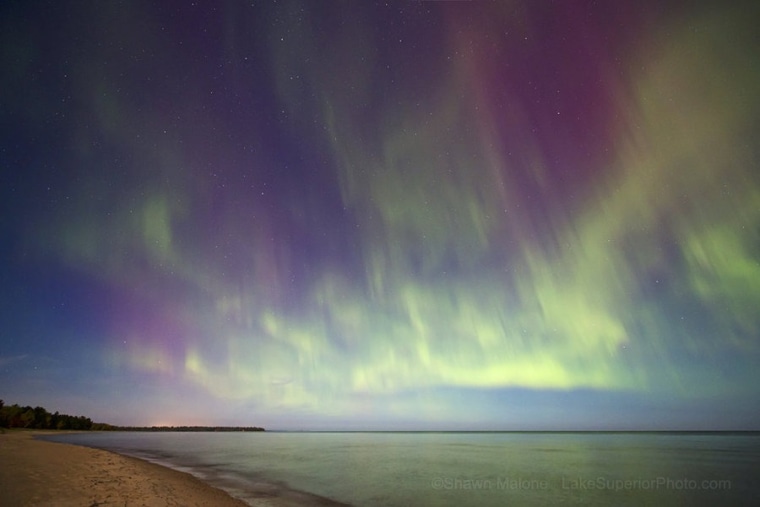
Michigan lights
The sky is aglow during an auroral display over Michigan's Central Upper Peninsula.
•Northern lights shine with the moon.
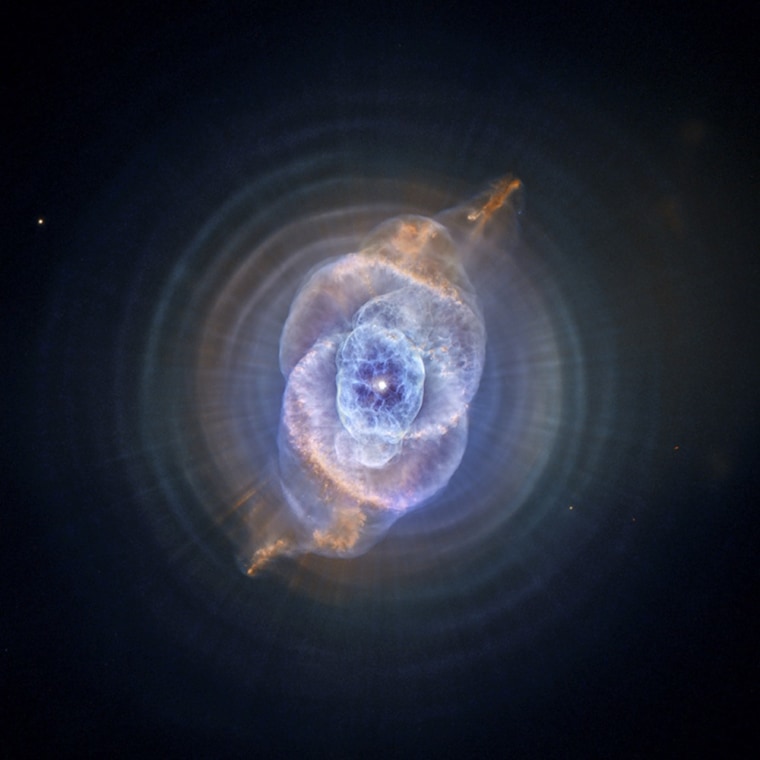
Cat's eye nebula
This NASA handout shows an optical image of planetary nebula NGC 6543 from the first systematic survey of such objects in the solar neighbourhood made with NASA's Chandra X-ray Observatory. A planetary nebula is a phase of stellar evolution that the sun should experience several billion years from now, when it expands to become a red giant and then sheds most of its outer layers, leaving behind a hot core that contracts to form a dense white dwarf star.
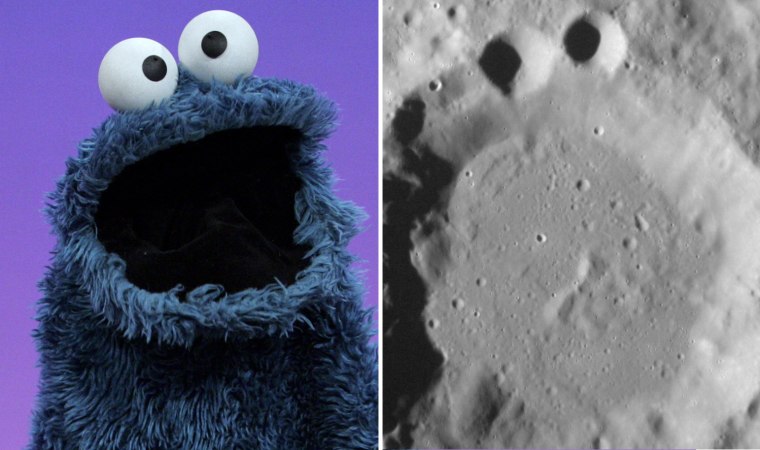
'C' is for crater
An Image from the MESSENGER spacecraft, right, of Mercury's surface shows an impact basin with two smaller craters above it, which shows a remarkable resemblance to Sesame Street's Cookie Monster, left.
Read: Cookie Monster spotted on Mercury? NASA thinks so
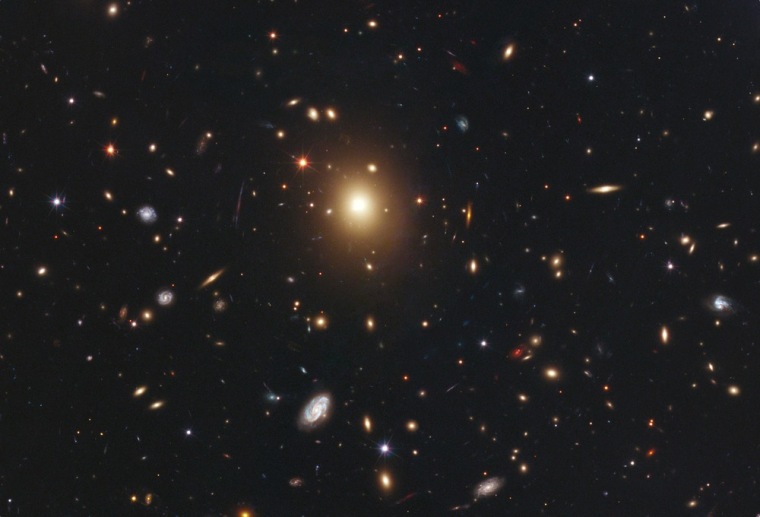
Galaxy's monster core
The giant elliptical galaxy in the centre of the image, taken by the NASA/ESA Hubble Space Telescope, is the most massive and brightest member of the galaxy cluster Abell 2261. Spanning a little over one million light-years, the galaxy is about 20 times the diameter of our Milky Way galaxy. The bloated galaxy is a member of an unusual class of galaxies with a diffuse core filled with a fog of starlight.
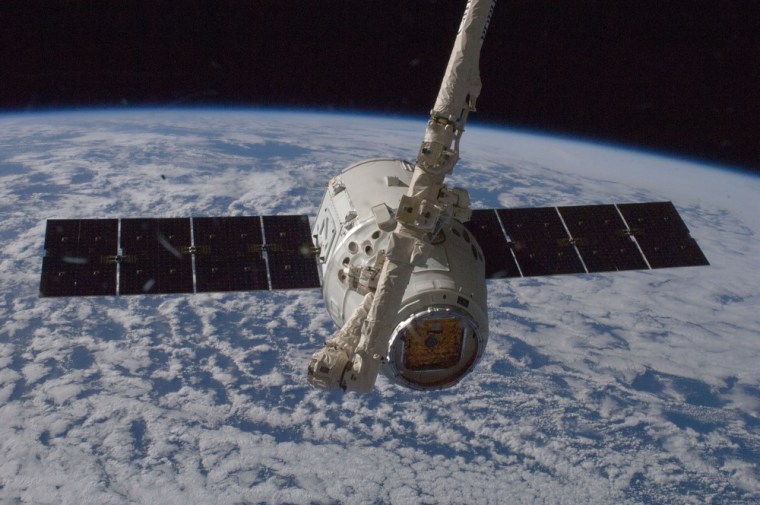
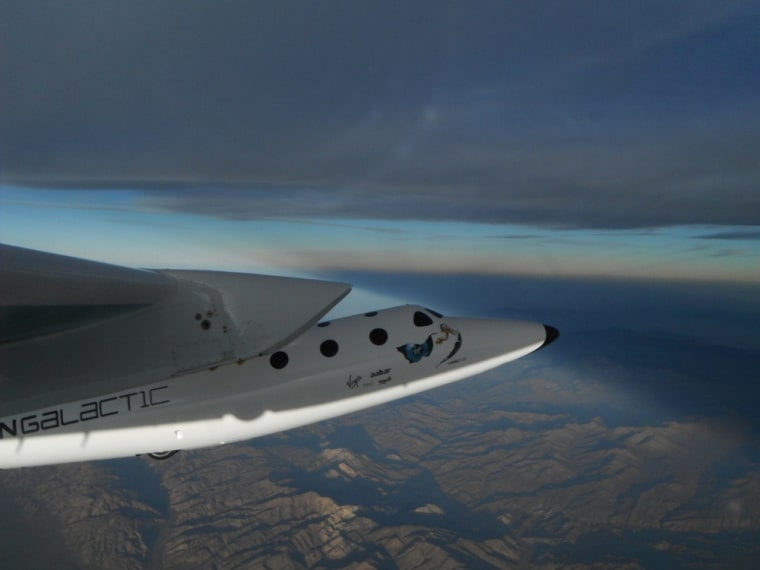
WhiteKnightTwo during her 100th test flight
Oct. 4, 2012 saw the eighth anniversary of the history making and X-Prize winning flight of SpaceShipOne, the world's first privately built manned space vehicle. That vehicle's successor, SpaceShipTwo, along with its carrier aircraft WhiteKnightTwo, marked the day with two important milestones in the rapidly advancing test flight program. It was confirmed that SpaceShipTwo had completed the subsonic portion of its test flight card successfully; exciting work is now underway fitting tanks and other elements of the propulsion system in preparation for supersonic, powered flight. WhiteKnightTwo undertook her 100th flight on the same day.
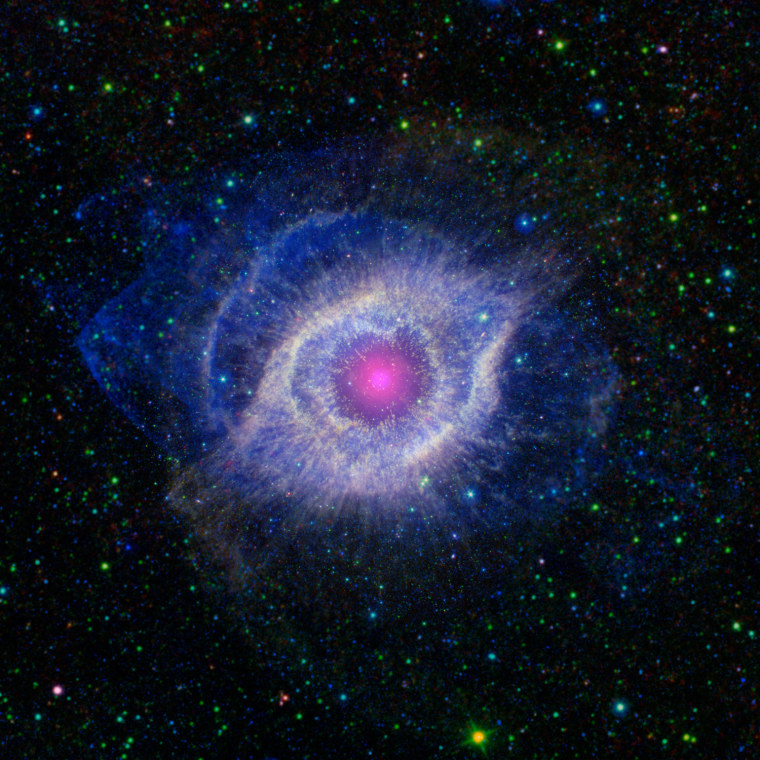
Cosmic tantrum
This NASA photo obtained on Oct. 5, 2012 shows a dying star throwing a cosmic tantrum in this combined image from NASA's Spitzer Space Telescope and the Galaxy Evolution Explorer (GALEX), which NASA has lent to the California Institute of Technology in Pasadena. In death, the star's dusty outer layers are unraveling into space, glowing from the intense ultraviolet radiation being pumped out by the hot stellar core. The glow from planetary nebulae appears surprisingly similar across a broad swath of the spectrum, from ultraviolet to infrared. The Helix remains recognizable at any of these wavelengths, but the combination shown here highlights some subtle differences. The brighter purple circle in the very center is the combined ultraviolet and infrared glow of a dusty disk circling the white dwarf (the disk itself is too small to be resolved). This dust was most likely kicked up by comets that survived the death of their star.

Shuttling Atlantis
The space shuttle Atlantis leaves the Kennedy Space Center in Cape Canaveral, Florida on Nov. 2, 2012, heading towards its new home at the privately operated Kennedy Space Center Visitor Complex adjacent to the NASA spaceport. NASA's third and last surviving space shuttle moved to its retirement home on Friday after a 10-mile (16 km) road trip from the Kennedy Space Center in Florida. Atlantis, which ended the 30-year-old space shuttle program with a final flight last year, will be the star attraction of a new $100 million exhibit at the Kennedy Space Center Visitor Complex.
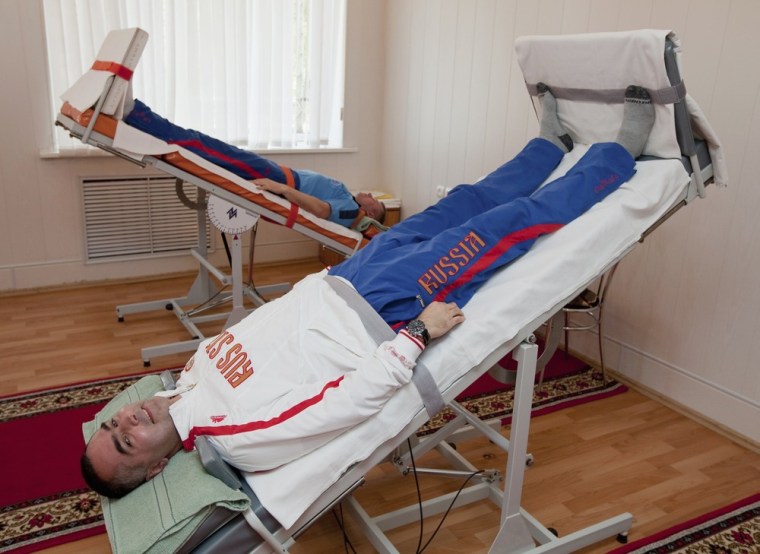
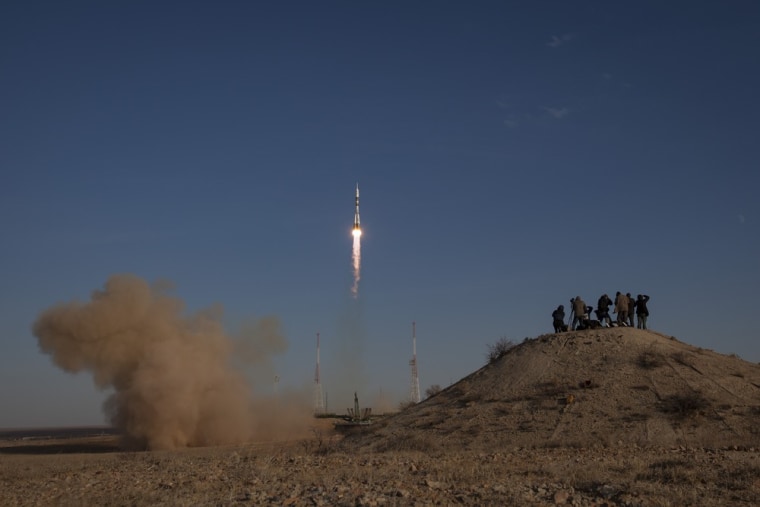
Hilltop view
Members of the media photograph the Russian Soyuz rocket as it launches with Expedition 33/34 crew members, Soyuz Commander Oleg Novitskiy, Flight Engineer Kevin Ford of NASA, and Flight Engineer Evgeny Tarelkin of ROSCOSMOS to the International Space Station on Oct. 23, in Baikonur, Kazakhstan. Ford, Novitskiy and Tarelkin will be on a five-month mission aboard the International Space Station.
Read: Soyuz rocket sends US-Russian crew (and fish) to space station